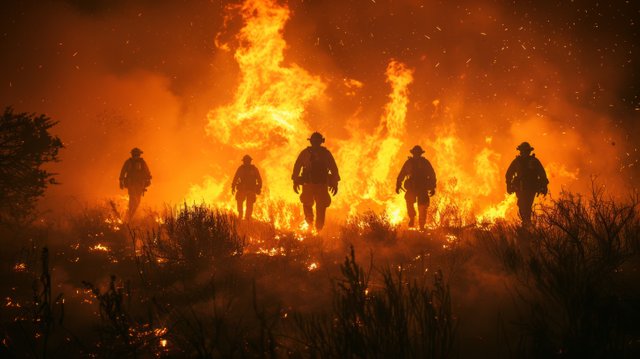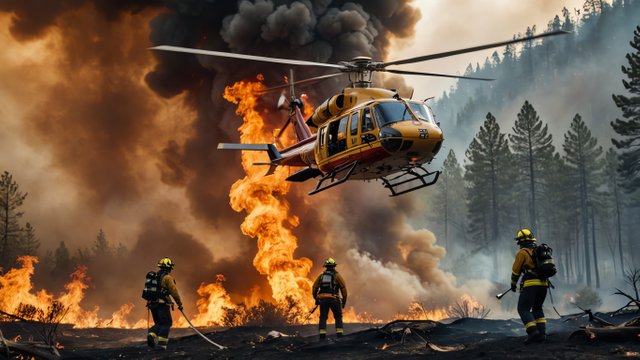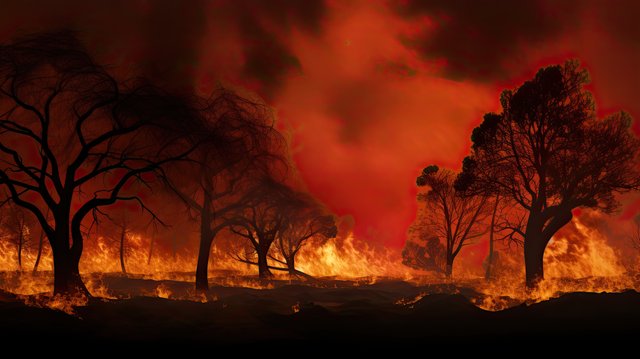California Wildfires: Causes, Impacts, and Future Prevention
California has long been synonymous with wildfires, a natural phenomenon that has escalated into a crisis affecting lives, the environment, and the economy. As of January 2025, the ongoing wildfires in Southern California have already resulted in catastrophic losses and raised urgent questions about climate change, land management, and community preparedness.

How Wildfires Start ?
Wildfires in California are primarily ignited by human activities, accounting for approximately 95-97% of all fires. Common causes include:
-Power Lines: Downed power lines during high winds can spark fires.
-Campfires: Unattended or improperly extinguished campfires are a significant ignition source.
-Arson: Intentional acts of setting fires contribute to the wildfire problem.
-Natural Causes: Lightning strikes can also ignite wildfires, particularly in remote areas.
Reasons Behind the Escalation
The recent wildfires have been exacerbated by several interrelated factors:
1-Climate Change: Rising temperatures and prolonged drought conditions have created an environment ripe for wildfires. The U.S. Environmental Protection Agency (EPA) reports that climate change has increased the frequency and duration of fire seasons across the state8.
2-Santa Ana Winds: These strong, dry winds can rapidly spread flames across large areas, making containment efforts difficult. Gusts have been recorded at speeds up to 100 mph8.
3-Vegetation Management: Overgrown brush and dead vegetation serve as fuel for fires. Poor land management practices have contributed to this buildup.
4-Urban-Wildland Interface: Many fires occur where urban areas meet wildlands, increasing the risk to homes and infrastructure2.

Damage and Impact
The damage caused by these wildfires is staggering:
-Loss of Life: At least 24 people have lost their lives due to the current fires1.
-Destruction of Property: Over 12,300 structures have been destroyed, including homes in some of California's most expensive real estate areas13.
-Economic Losses: Preliminary estimates suggest that damages could reach between $250 billion and $275 billion, making these fires among the costliest in U.S. history39.
-Environmental Consequences: Wildfires release significant amounts of carbon dioxide and other pollutants into the atmosphere. In 2020 alone, wildfires accounted for about 30% of California's greenhouse gas emissions5. The aftermath includes soil erosion, water contamination from runoff, and long-term ecological changes62.
Effects on People's Lives
The impact on communities is profound:
Displacement: Thousands of residents have been evacuated from their homes, with many facing uncertainty about returning7.
Health Risks: Smoke exposure poses serious health risks, leading to respiratory issues and other health problems for millions in affected areas1.
Psychological Impact: The trauma associated with loss of homes and livelihoods can lead to long-term psychological effects on individuals and families.
Lessons Learned
The recent spate of wildfires offers critical lessons:
1.Preparedness is Key: Communities must develop comprehensive emergency plans that include evacuation routes and communication strategies.
2.Land Management Practices: Improved vegetation management can reduce fire risk. This includes controlled burns and clearing brush around urban areas.
3.Investment in Infrastructure: Upgrading power lines to be more resilient against wind damage can help prevent ignitions.
4.Public Awareness Campaigns: Educating the public about fire safety and prevention measures is essential.

How to Avoid Future Wildfires
To mitigate future wildfire risks, several strategies can be implemented:
- Create Defensible Space: Homeowners should maintain a defensible space around their properties by clearing flammable materials.
- Use Fire-Resistant Materials: Building homes with fire-resistant materials can reduce vulnerability.
- Community Engagement: Local governments should engage residents in fire prevention initiatives and provide resources for preparedness.
- Monitor Climate Trends: Understanding climate patterns can help predict fire seasons and prepare accordingly.
Conclusion
California's wildfires are a complex issue influenced by climate change, human activity, and ecological factors. As we move forward, it is crucial to learn from these devastating events to protect lives, preserve the environment, and strengthen communities against future threats. By implementing proactive measures and fostering resilience, we can work towards a safer future in the face of increasing wildfire risks.